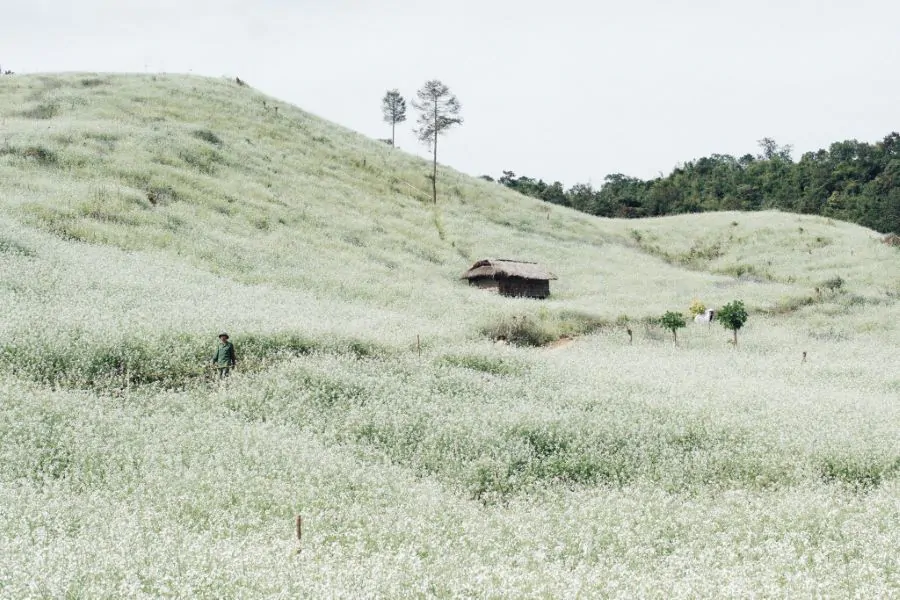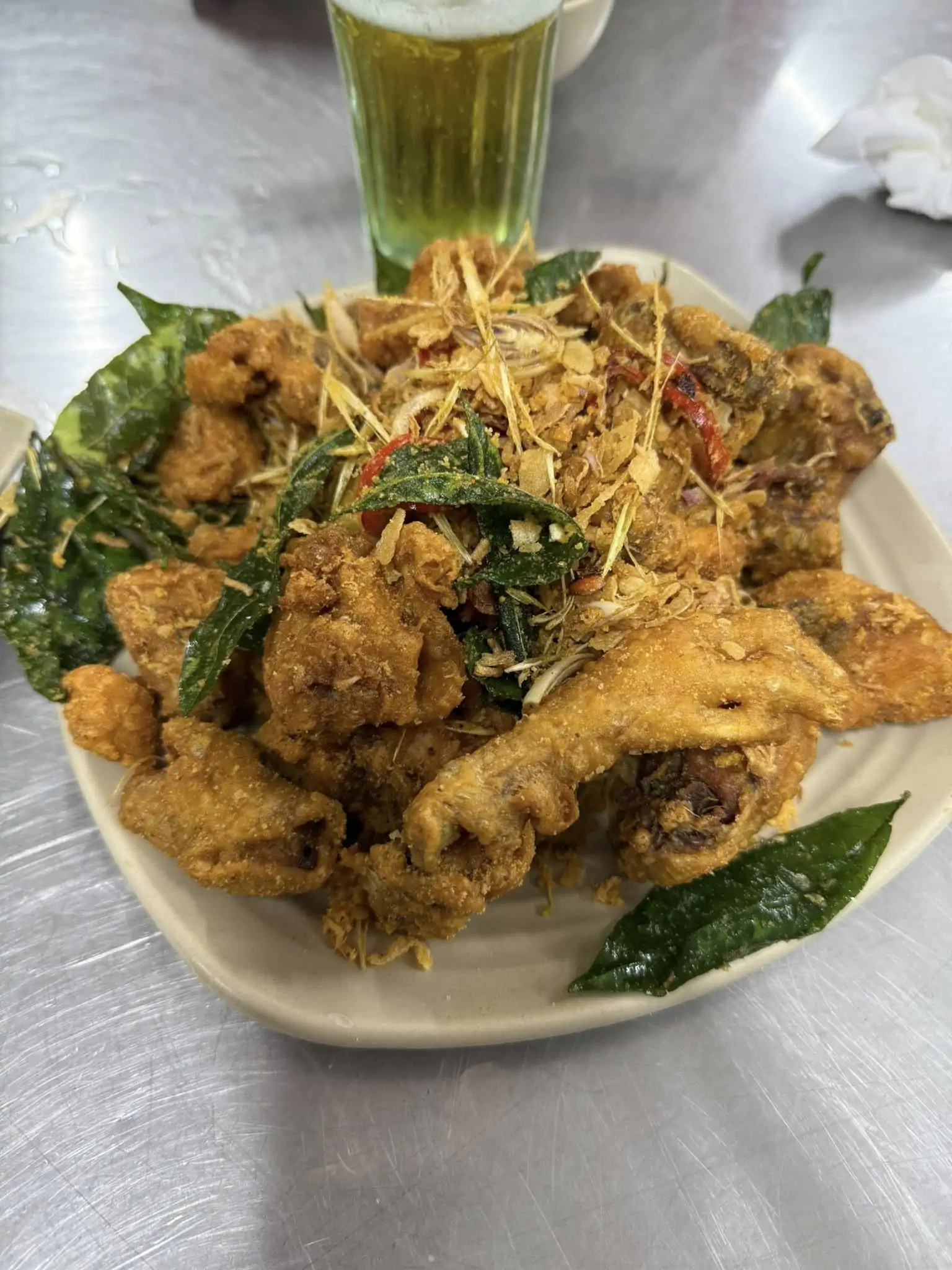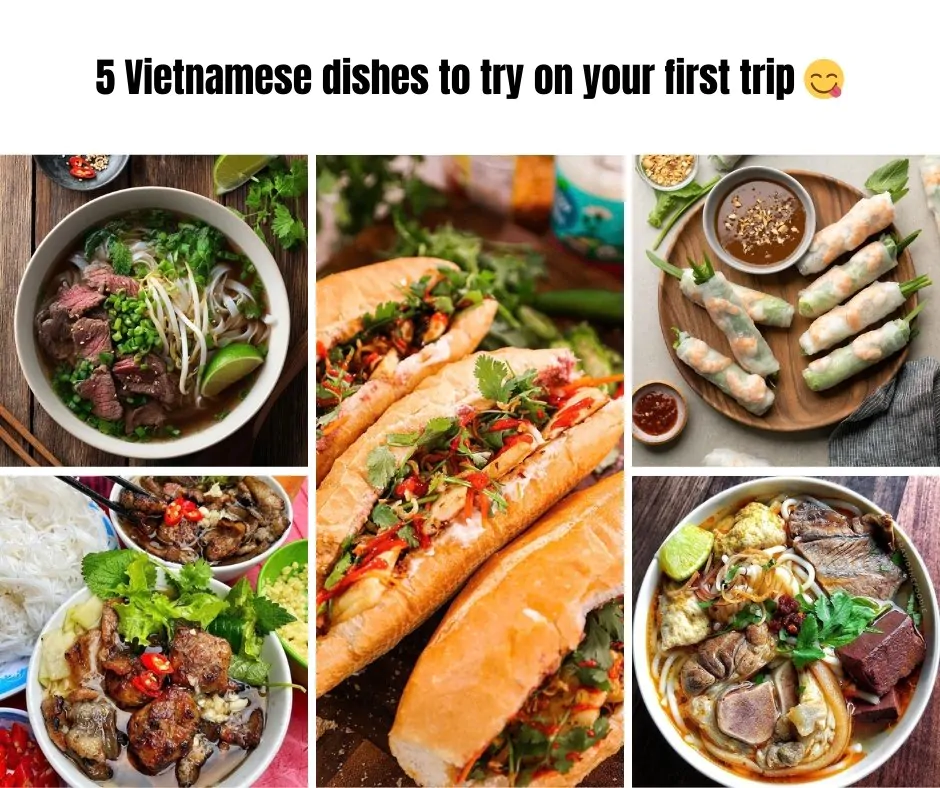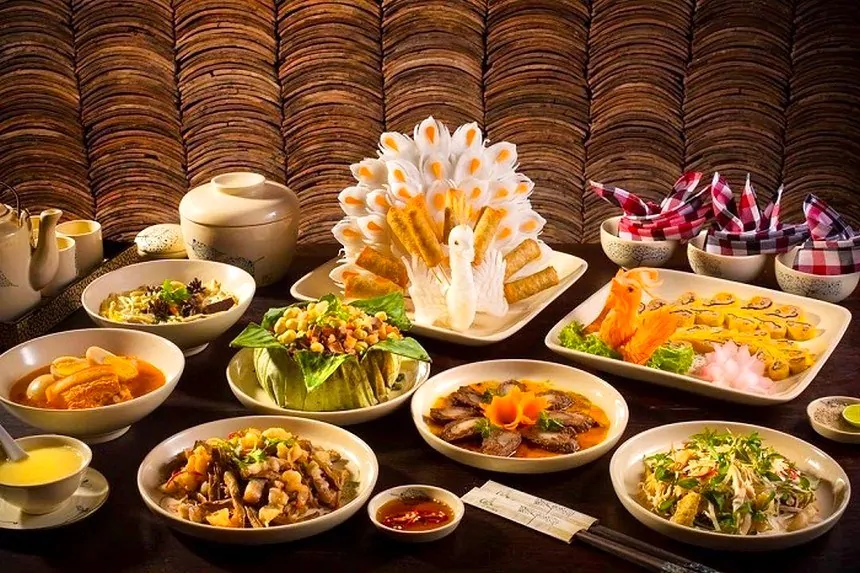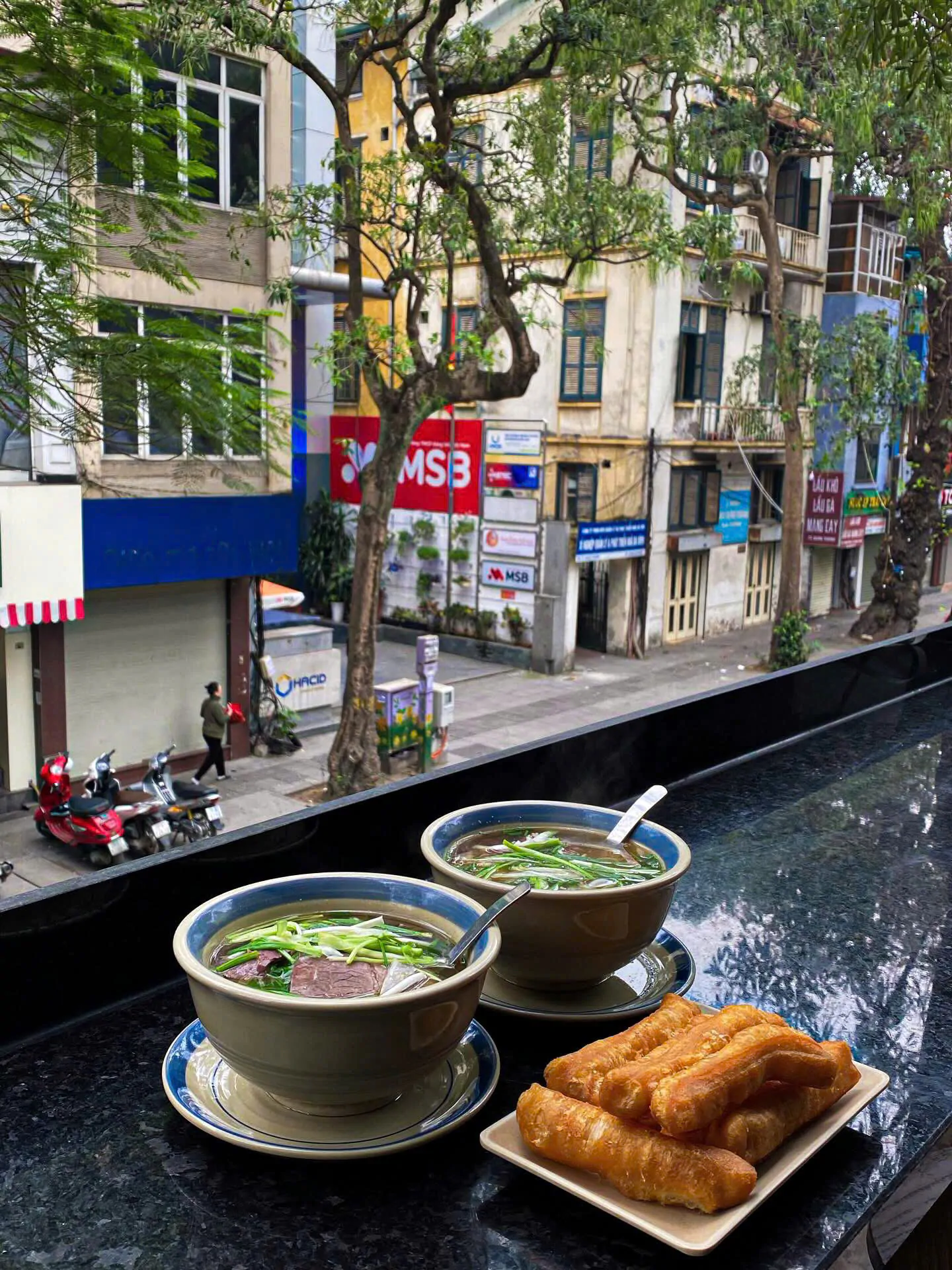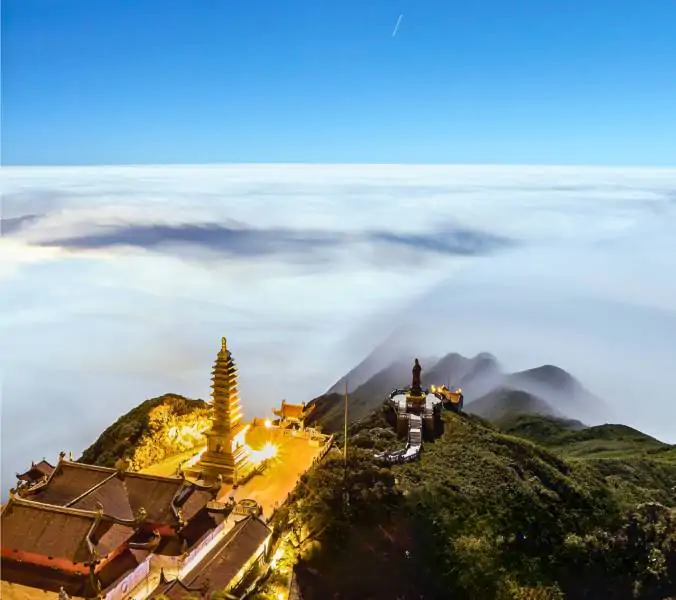Contents
- 1. When is the best time to visit this region of Vietnam?
- 2. The best time to visit Vietnam by month:
- 3. When is the best time to visit Vietnam by destination?
- 3.1. The best time to visit Phu Quoc, Vietnam
- 3.1.1. The dry season – The best time to visit Phu Quoc Island in Vietnam
- 3.2. The best time to visit Nha Trang, Vietnam
- 3.2.1. February to May – The best time to travel to Nha Trang
- 3.2.2. The rainy season in Nha Trang
- 3.3. The best time to visit Hoi An, Vietnam
- 3.3.1. The dry season in Hoi An
- 3.4. The best time to visit Da Nang, Vietnam
- 3.6. The best time to visit Ho Chi Minh City
- 3.7. The best time to visit Ha Long Bay, Vietnam
- 4. Choose the best time to travel to Vietnam by special occasions
The best time to visit Vietnam is difficult question to answer, as the weather varies between different regions. This article will provide an ultimate guide to the weather in the top destinations in Vietnam so that you can choose the best time for your trip.
The climate in Vietnam varies between regions, presenting a challenge for travelers in determining the best time to visit. Follow our travel guide to save time and make the most of your Vietnam journey.

1. When is the best time to visit this region of Vietnam?
The best time to visit Vietnam is difficult question to answer, as the weather varies between different regions. This article will provide an ultimate guide to the weather in the top destinations in Vietnam so that you can choose the best time for your trip.
The climate in Vietnam varies between regions, presenting a challenge for travelers in determining the best time to visit. Follow our travel guide to save time and make the most of your Vietnam journey.

1.1. North Vietnam
The optimal time to explore North Vietnam, including Hanoi, Halong Bay, and Sapa, is from October to April. During this period, the weather is generally cooler and drier, with temperatures ranging from comfortable to chilly. November to March is especially popular, as the weather is cooler and less humid, making it perfect for trekking in Sapa and discovering the cultural sites of Hanoi.
1.2. Central Vietnam
Central Vietnam, including destinations such as Hue, Da Nang and Hoi An, has a distinct climate. The best time to visit this region is from February to August when the weather is usually warm and dry. April to August marks peak tourist season, with abundant sunshine and ideal conditions for beach activities along the coast.
1.3. South Vietnam
South Vietnam features a tropical climate with two main seasons: the dry season and the rainy season. The ideal time to explore the south is during the dry season, which extends from December to April. This period offers ample sunshine and reduced rainfall, making it suitable for discovering places like bustling Ho Chi Minh City, cruising the Mekong Delta, and enjoying the stunning beaches of Phu Quoc.
2. The best time to visit Vietnam by month:

January, February, March:
During these months, the weather is cool, with occasional drizzles and high humidity in some provinces and cities in the North. This period also coincides with Tet (Lunar New Year), the biggest festival of the year for Vietnamese people, offering the opportunity to experience many unique traditional festivals. Suggested destinations include Hanoi, Ninh Binh, Lang Son, Sapa and Ha Giang.
March and April:
In March and April, the weather is dry with little to no rain, and the sun is not too intense. This period is ideal for various outdoor activities such as hiking, cycling, sightseeing, and exploring nature reserves.
June, July, August, September:
These months signify the beach tourism season in Vietnam as the country enters summer. It’s a popular time for seaside vacations and enjoying water activities like swimming, sunbathing, snorkeling, and surfing. Vietnam boasts beautiful beach destinations like Nha Trang, Da Nang, and Phu Quoc.
October, November, December:
In October, November, and December, the weather becomes colder in the northern region, while the central and southern regions experience cooler and more pleasant temperatures. This time is suitable to explore destinations in Central and Southern Vietnam..
3. When is the best time to visit Vietnam by destination?
The best time of year to visit Vietnam is usually during the dry season, which varies according to different regions of the country. The dry season brings pleasant weather for outdoor activities and exploration. However, it’s important to note that weather patterns can change slightly each year. It’s always a good idea to check the specific forecast for the period you plan to visit.
You might also like:
– Vietnamese flowers: Explore the blooming seasons in 12 months
– Nightlife in Vietnam: 10+ hottest places to hang out and more
– National Unification Day: Date, history and commemorative activities
3.1. The best time to visit Phu Quoc, Vietnam

The most ideal time to travel to Phu Quoc, Vietnam Phu Quoc Island is blessed with a pleasant climate all year round. Average temperature is around 28 degrees Celsius. Lots of sunshine, low to moderate humidity, ideal for all outdoor activities, including swimming, snorkeling, island hopping and trekking .
To be more specific, the weather in Phu Quoc can be split into two seasons: the dry season (November to April) and the rainy season (July to September).
3.1.1. The dry season – The best time to visit Phu Quoc Island in Vietnam
The best time to visit the beaches in Phu Quoc, Vietnam, is undoubtedly during the dry season, which lasts from November to April.
During this period, Phu Quoc experiences plenty of sunshine, with temperatures ranging between 24 and 28 degrees Celsius. Additionally, there is little likelihood of rain, and the wind remains calm.
The dry season is ideal for all outdoor activities, including swimming, sunbathing, and diving. The roads also become dry and not slippery, making it perfect for exploring the island by motorbike. Moreover, camping, photography, and birdwatching amidst the dense forest are great activities to try during this season.
3.2. The best time to visit Nha Trang, Vietnam

Nha Trang is another renowned beach destination in Vietnam. The best time to visit Nha Trang is generally from February to May.
Nha Trang experiences a tropical monsoon climate, influenced by the oceanic climate, resulting in weather that is not as unpredictable as in Southern Vietnam nor as harsh as in Northern Vietnam. The average annual temperature in Nha Trang is about 26 degrees Celsius.
There are two main seasons in Nha Trang: the rainy season, which occurs from September to December, and the dry season, which lasts from January to August.
3.2.1. February to May – The best time to travel to Nha Trang
Between February and May is considered the ideal time to visit Nha Trang. During this period, the temperature ranges between 26 and 27 degrees Celsius. Visitors can expect plenty of sunshine, blue skies, and mild winds, creating perfect conditions for beach activities. The beaches are exceptionally beautiful with clean water, making it ideal for sunbathing, swimming, and other water sports. Moreover, this period is not the peak tourist season in Nha Trang, so visitors can enjoy the attractions without being overwhelmed by crowds.
3.2.2. The rainy season in Nha Trang
Nha Trang experiences heavy rainfall between September and December. Storms from the East Sea frequently affect Nha Trang around this time, leading to excessive rain. As a result, it may not be convenient to visit and enjoy the tourist sites during the rainy season. Activities like swimming, mountain climbing, and other outdoor pursuits may be hindered.
However, one advantage of the rainy season is the significantly lower room rates. If you’re on a tight budget, traveling during this season could be an option. You might find the opportunity to stay in top Nha Trang hotels and resorts like Vinpearl Nha Trang at much lower prices than during the peak tourist season.
3.3. The best time to visit Hoi An, Vietnam

Hoi An experiences a hot and humid climate typical of the tropical monsoon climate. It is divided into two seasons: the rainy season (from August to December) and the dry season (from January to July).
The best time to visit Vietnam’s Hoi An is from February to April, during the dry season.
3.3.1. The dry season in Hoi An
From February to April is considered the optimal time to travel to Hoi An. The weather during this period is cool and pleasant, with plenty of sunshine and blue skies. Additionally, the peak tourist season has not yet arrived, so the streets are not overly crowded, allowing visitors to enjoy the tranquil atmosphere while strolling along the ancient streets.
3.4. The best time to visit Da Nang, Vietnam

As Da Nang is located adjacent to Hoi An Ancient Town, it shares the same weather conditions all year round. Similar to Hoi An, the best time to visit Da Nang, Vietnam, is between February and April.
3.4.1. The ideal time to travel to Da Nang
The dry season, which falls between January and July, is considered the best time to visit Central Vietnam’s metropolis.
From February to April is the period with the best weather conditions. During this time, the city experiences plenty of sunshine, with moderate humidity, creating favorable conditions for exploring the city on foot or by motorbike. The average water temperature at Da Nang beaches is around 25 degrees Celsius, which is perfect for beach exploration.
3.4.2. The rainy season in Da Nang
During the rainy season in Da Nang, which typically occurs from October to December, there is rarely a dry day. The sky tends to be quite gloomy, and the region experiences frequent rainfall. As a result, the roads may become slippery, and the water at the beaches may no longer be as clear. This period may not be the most ideal for outdoor activities or beach vacations.
3.5.2. Winter – Another favorable time to visit Hanoi
Winter, which lasts from November to January, is another favorable time to visit Hanoi. During this season, the weather is cooler and drier compared to the humid summer months. The temperature in Hanoi during winter can range from mild to chilly, with occasional cold spells.
This period is ideal for exploring the city’s attractions, such as its historic sites, temples, and vibrant street markets, without having to contend with the heat and humidity of summer. Additionally, winter in Hanoi coincides with the festive season, including Christmas and New Year, adding to the city’s lively atmosphere with decorations and celebrations.
3.5.3. Spring – Festive and flower-blooming season in Hanoi
If you are unable to visit Hanoi in autumn, another great time to come here is from February to early April, during the spring season. This period is marked by festive celebrations and the blooming of flowers throughout the city.
During spring, Hanoi experiences milder temperatures compared to the extremes of summer and winter. The weather is generally pleasant, with warm days and cool evenings. This makes it an ideal time to explore Hanoi’s many attractions, enjoy outdoor activities, and witness the city’s vibrant atmosphere as it celebrates the Lunar New Year (Tet) and other traditional festivals.
3.5.4. Contrasting weather in Hanoi, Vietnam
Compared to the moderate conditions of spring and autumn, both summer and winter in Hanoi bring more extreme weather. Summer is characterized by hot and humid days, while winter can bring cold temperatures, especially during cold spells.
3.6. The best time to visit Ho Chi Minh City

The best time to visit Ho Chi Minh City, also known as Saigon, is during the dry season, which lasts from December to April. During this period, the weather is generally sunny and dry, with lower humidity levels compared to the wet season. It’s an ideal time for outdoor activities and sightseeing.
On the other hand, the wet season in Ho Chi Minh City occurs from May to November, with the highest rainfall typically experienced from June to September. During this time, heavy rains are common, leading to occasional flooding in low-lying areas. While the wet season may not be the most comfortable for outdoor activities, it still offers a chance to experience a different side of the city.
3.6.1. When to visit Saigon, Vietnam?
The best time to visit South Vietnam’s Saigon is during the dry season. This period, which typically extends from December to April, offers favorable weather conditions for exploring the city without worrying about unexpected downpours. You can freely wander through the crowded downtown streets, discover the centuries-old French colonial buildings, or enjoy outdoor amusement parks without the interruption of rain.
3.6.2. Rainy days in Ho Chi Minh City
During the rainy season in Ho Chi Minh City, the city experiences heavy rainfall, often leading to flooding in low-lying areas. However, the rain is typically short-lived and tends to clear off quickly. Despite the occasional downpours, there are intervals of sunshine and blue skies, providing opportunities to continue exploring the city between showers.
3.7. The best time to visit Ha Long Bay, Vietnam

3.7.1. From December to January – the ideal time to travel to Ha Long Bay
While domestic travelers tend to visit Ha Long Bay in summer to escape the heat and enjoy the beaches, foreign travelers prefer to visit this destination in fall and winter. During the months of December to January, Ha Long Bay experiences cooler temperatures and drier weather, making it an ideal time for international tourists to explore its stunning landscapes and iconic limestone karsts.
From December to January is the best time to visit Ha Long Bay in Vietnam. During this period, the weather is excellent, with temperatures ranging between 15 to 21 degrees Celsius. There is minimal chance of rain, making it perfect for outdoor activities such as cave exploration, kayaking, and swimming.
3.7.2. When to refrain from taking a Ha Long Bay tour?
It’s best to avoid visiting Ha Long Bay between June and September, which is the rainy season. During this time, there is a higher chance of encountering typhoons and storms, which can lead to delays or cancellations of boats and cruises.
4. Choose the best time to travel to Vietnam by special occasions
4.1 Tet Holiday
Tet Holiday also known as Lunar New Year, is one of the most significant celebrations in Vietnam, marking the beginning of the lunar calendar year. The exact date varies each year, typically falling between late January and mid-February.
For travelers interested in experiencing Tet festivities, the best time to visit Vietnam is around the time of the Tet Holiday. During this period, you can witness vibrant celebrations, traditional customs, and cultural activities throughout the country. It’s a time when families reunite, streets are decorated with colorful decorations, and special foods are prepared.
To fully immerse yourself in the Tet experience, plan your visit to coincide with the days leading up to Tet and the first few days of the new year. This allows you to witness the bustling atmosphere of markets, the elaborate preparations, and the joyous celebrations that characterize this special occasion in Vietnam.
4.2. Hue Festival

The Hue Festival offers a splendid opportunity for tourists to delve deeper into the rich cultural heritage of Hue, the former citadel of Vietnam. Held biannually, typically every two years, this festival spans over a week and occurs in either April, May, or June.
During the festival, visitors are treated to a diverse array of royal ceremonies, traditional events, and artistic performances, all of which serve to illuminate the city’s profound cultural values. From ancient rituals to contemporary artistic expressions, the Hue Festival offers a comprehensive showcase of the city’s invaluable heritage.
Through immersive experiences and engaging activities, tourists gain a deeper insight into the traditions, customs, and history that have shaped Hue into the cultural gem it is today. Whether witnessing grand royal processions, participating in traditional festivities, or enjoying mesmerizing artistic displays, the Hue Festival promises a captivating journey through Vietnam’s cultural heartland.
4.3. International Fireworks Festival
The International Fireworks Festival held annually along the banks of the Han River in Da Nang is a spectacular event that draws participants from around the world. This competition showcases vibrant and dazzling fireworks performances, captivating audiences with stunning displays of light and color.
Taking place along the picturesque riverbank, the festival offers a unique opportunity to witness the creativity and skill of fireworks experts from various countries. Each contestant brings their own unique style and flair to the competition, resulting in a diverse array of mesmerizing displays that illuminate the night sky.
For spectators, the International Fireworks Festival promises an unforgettable experience filled with excitement, wonder, and awe. Whether enjoying the show from the riverbank or aboard a boat on the Han River, visitors are treated to a breathtaking spectacle that celebrates the artistry and magic of fireworks.
The best time to visit Vietnam for the fireworks festival is typically between May and July. In 2023, the festival is scheduled to take place from June 3 to July 8. This period offers visitors the opportunity to witness the dazzling displays of fireworks along the banks of the Han River in Da Nang. It’s a fantastic time to experience the vibrant atmosphere and excitement of this spectacular event, showcasing the creativity and artistry of fireworks from around the world.
4.4. Mid-Autumn Festival
The Mid-Autumn Festival is another captivating celebration to experience during your visit to Vietnam. Also based on the lunar calendar, the festival occurs on the full moon night of the 8th lunar month, typically falling between early September and early October. This traditional festival is marked by colorful lanterns, dragon dances, mooncakes, and family gatherings, making it a wonderful cultural experience for visitors to immerse themselves in Vietnamese traditions and festivities.
Indeed, the Mid-Autumn Festival holds significant cultural importance in Vietnam, and the preparations leading up to it are a crucial part of the celebration. In the weeks leading up to the festival, the streets and markets come alive with vibrant decorations and displays, creating a festive atmosphere that captures the excitement of the occasion. It’s a wonderful time to immerse yourself in the local culture and witness firsthand the anticipation and joy of the community as they prepare for this special event.
To ensure the best vacation experience in Vietnam, it’s important to plan and book in advance. Among the many tour companies offering services in Vietnam, Discover Vietnam Tours is a great option for arranging your travel itinerary with just a few emails and WhatsApp messages. They provide airport transfers, accommodation booking, tour guides, drivers, and customizable activities based on your preferences.
With their assistance, you can tailor your trip according to your desired schedule and preferences, ensuring a seamless and enjoyable travel experience throughout Vietnam.











